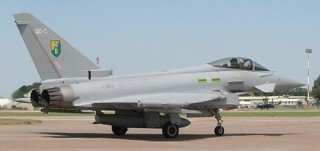Bankbusters
Tim Johnson
In distant, inhospitable climates, military forces often struggle to provide Close Air Support to dispersed detachments of troops on the ground. CAS involves aircraft hanging around at low altitude, close to the action, for a long period of time, to protect ground troops from such threats as enemy tanks and artillery by blowing them up. Cutting-edge fighter planes are no good for it as they quickly run out of fuel, can’t loiter long at lower altitudes and aren’t well enough armoured.
The problem, which Nato is experiencing in Libya, isn’t new: the US faced it in Vietnam. It led to the development of the Fairchild Republic A-10 Thunderbolt, a heavily armoured ‘tankbuster’ that until a couple of weeks ago was flying sorties in Libya, more than thirty years after it was first deployed. The A-10 is effective, reliable, cheap and, as Jeffrey St Claire wrote a few years ago in Counterpunch, an irritant to arms manufacturers who want to sell seductive new and expensive weapons systems to the American government.
In the Financial Times last week, Daniel Dombey pointed out that the A-10 is one of the reasons Britain and France want the US to retake command of the air campaign in Libya: British and French fighters are struggling to provide adequate CAS for the rebels. The Eurofighter Typhoon – beset by delays, the Saudi bribe scandal and staggering costs – was designed primarily to intercept other fighter planes, as was the F-104 Starfighter which proved so useless in Vietnam.
The UK’s gung-ho defence minister, Liam Fox, wrote recently that his ‘vision’ for the armed forces, ‘Future Force 2020’, will avoid the ‘trap of assuming that all future wars would look like the wars of today’. But his plans for the air force suggest he’s still fantasising about fighting the Battle of Britain. Future Force 2020 ‘will require real-terms year-on-year increases in the defence budget in the second half of the decade’. Austerity goes out the window when Dr Fox goes shopping for new planes. The government reckons the NHS can be run on the cheap, but when it comes to weaponry, only the best will do; ‘best’ in this case meaning newest and most expensive. But history and the facts on the ground say otherwise.

Comments
recommended
The Warthog is a tank killer: it carries AT missiles and its huge 30mm canon (the plane is literally built around it!) is mostly armed with heavy depleted uranium rounds meant to destroy tanks. Probably the only truly anti-personnel weapon it can carry are guided (by GPS or laser) and unguided bombs. But nowadays you can't unleash any of that in a city like Misrata without probably angering even the rebels you claim to be supporting (you would probably end killing plenty of them also). So the best use for the Warthog would be on the roads into towns and cities. But Gaddafi's forces have learnt their lesson and now try to hide in the surrounding desert, using as few vehicles as possible. To deal with these guerrillas you are probably better off using small rapid reaction forces transported by helicopter. But since the rebels have proven themselves militarily inept, these forces would have to be made of NATO soldiers. Again, air power has its limitations, and in Libya they have become unprofitably evident.